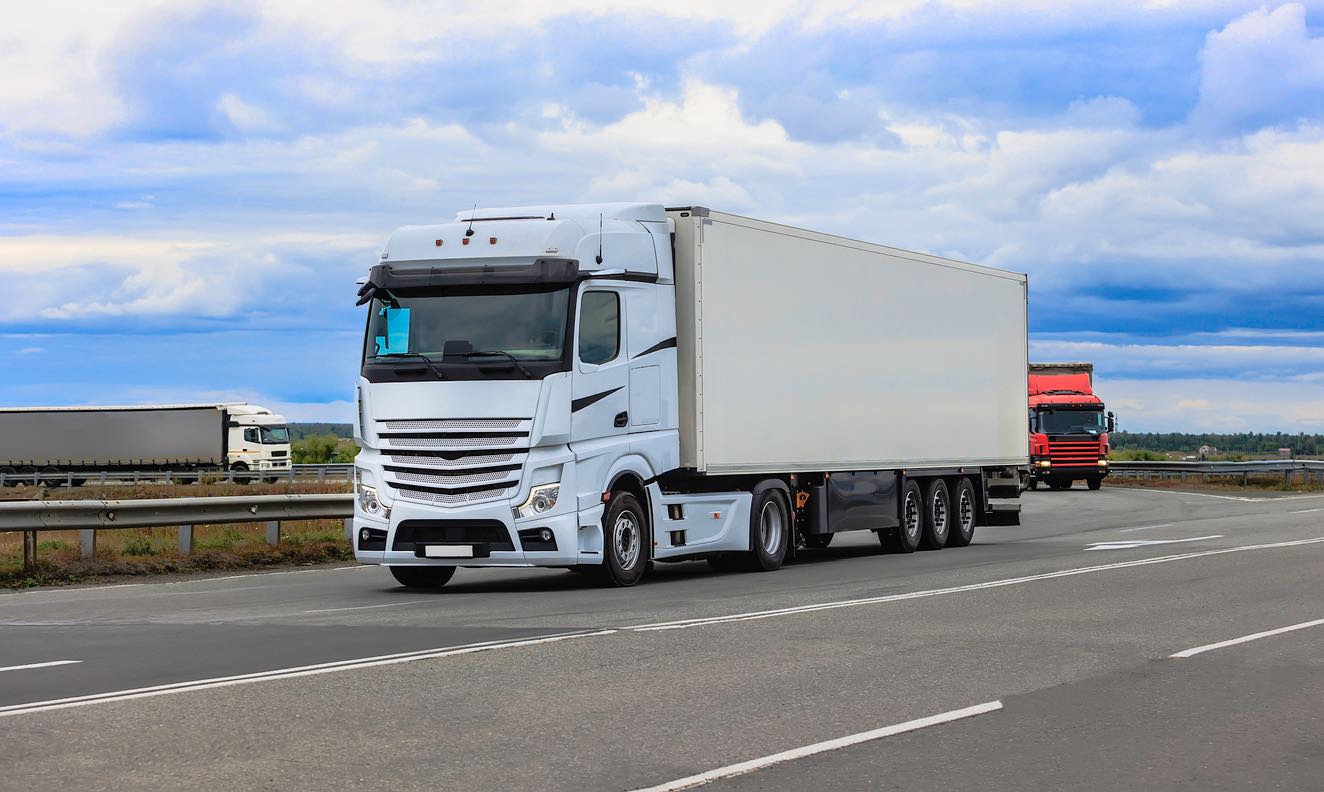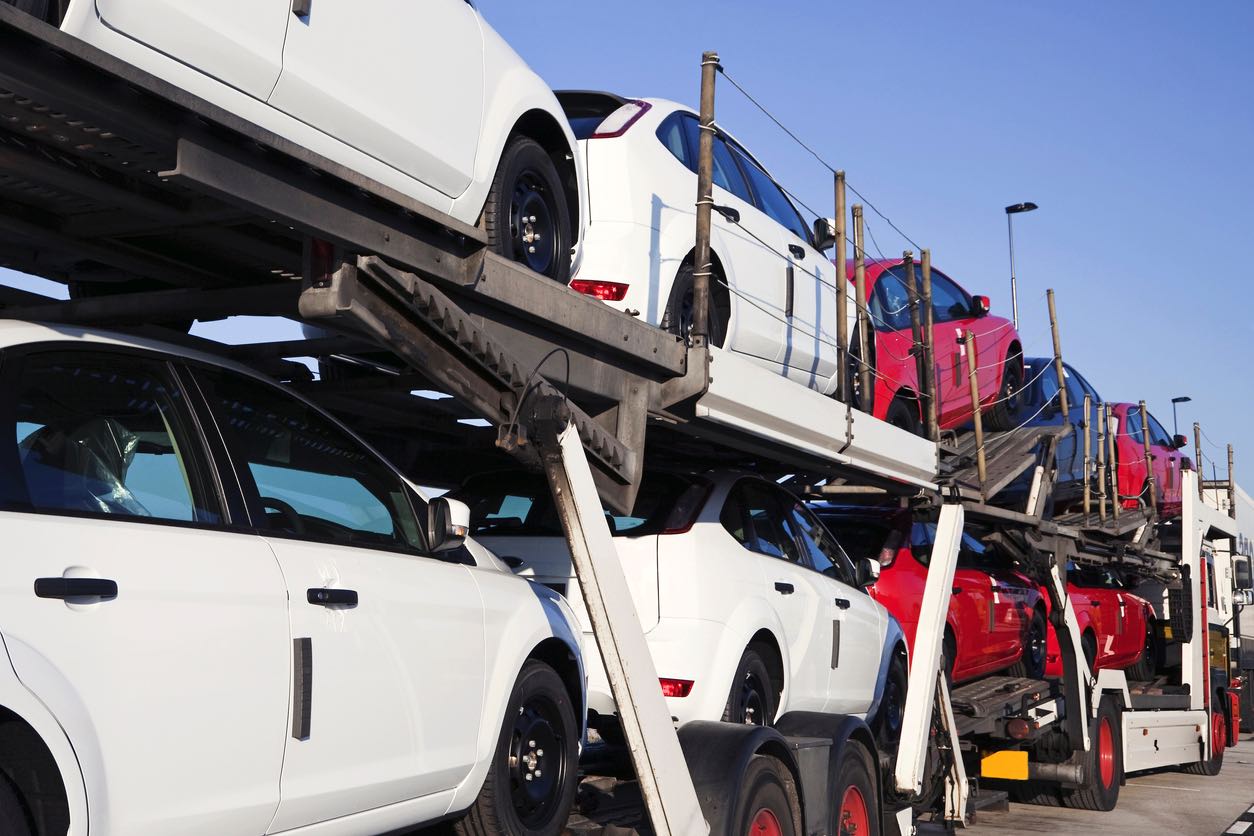Transporting a car from point A to point B is not the only task involved in shipping a non-operational car. It’s a journey that calls for careful preparation, knowledge, and experience. Even though the task may seem complicated at first, particularly to those who are not familiar with the logistics, it is a challenge that can be easily met head-on with the correct assistance.
Why Ship a Non-Operational Car? A non-running vehicle may need to be shipped for a variety of reasons. It could be a beloved vintage car that needs to be restored, a motor vehicle that was involved in an accident, or just a car that has seen better days. No matter the reason, every car has potential, memories, and worth, so it is essential to use them safely and effectively for transportation.
The Challenges Ahead Distinct difficulties arise with non-running cars as opposed to operating ones. Because they cannot be driven onto a transport truck, loading and unloading them requires specific equipment. Furthermore, special attention may be needed due to their condition in order to stop additional damage during transit.
Empowerment through Knowledge Understanding is the key to a good shipping experience. Gaining knowledge of the whole shipping process will enable you to make wise choices that will protect the safety of your car and cut down on unforeseen expenses. With the goal of being your reliable car shipping companion, this guide will clarify every facet of the trip and provide you with the necessary knowledge to successfully negotiate the challenges of non-operational auto shipping.
A Promise of Smooth Sailing Even though there may seem to be many challenges along the way, keep in mind that numerous people and companies have successfully shipped their non-operational vehicles across the United States. You too can become one of them by using this guide, which will make an intimidating task go smoothly and without any problems.
With information readily available to us in the digital age, it’s critical to cut through the clutter and concentrate on trustworthy, useful insights. This guide aims to provide exactly that—making sure your non-working vehicle gets to its destination quickly and safely.

Of course! In the auto transport industry, shipping a non-running car is not only possible, but a frequently requested service. Vehicles that are in operation can be shipped easily, but non-running cars need special handling. It is common practice to use specialized equipment, like winches or flatbed trucks, to guarantee the vehicle’s safe loading and unloading. It’s also essential to work with a transport company that has the know-how and experience to deal with these particular difficulties in order to ensure that your non-operational vehicle arrives at its destination without incident. This specialized service guarantees that your car can be professionally and easily transported to any destination, even if it isn’t ready for the road.
It is crucial to know the state of a non-operational vehicle before shipping it. This information is helpful in estimating costs and choosing the best car shipping company (both broker and carrier), in addition to guaranteeing a seamless shipping experience. Let’s examine why it’s so important to know the state of your car in more detail:
Understanding the Problem: Each car has its own problems that make it unique. Finding the precise cause of your car’s problem is the first step in a smooth shipping experience. Whether the issue is a non-starting engine, faulty brakes, or steering problems, knowing exactly what’s wrong lets you communicate with the car shipping company in an efficient manner. This lowers the possibility of unanticipated challenges during loading, transit and unloading, by ensuring that the carrier is equipped to handle your car.
Cost Implications: The cost of shipping is directly impacted by your car’s condition. For example, there are special difficulties when an automobile is unable to steer or brake. Loading and unloading such vehicles requires specific tools and knowledge. Shipping costs are frequently increased as a result of this complexity. Knowing the specific problems with your car will help you obtain a more accurate cost estimate and set aside money for repairs. Furthermore, by giving specific details about the state of your car, you can prevent any unforeseen fees or surcharges that might result from unreported problems.

Open Transport: Due to its affordability, open transportation is frequently the first option for many. Using this method, the vehicle is positioned on an open trailer, leaving it visible and open to the elements. There are possible risks even though it’s the most economical approach. The vehicle is vulnerable to outside influences such as weather and road debris. Nonetheless, open transport provides an unbeatable mix of affordability and practicality for short-distance transportation or for cars where aesthetic perfection isn’t a top concern.
Enclosed Transport: The preferred choice for people who value the security and safety of their car is enclosed transport. Cars are transported inside a closed trailer, as the name implies, protecting them from the weather and road debris. Because it provides an extra layer of protection against potential damage, owners of luxury, vintage, or classic cars particularly favor this method. Even though enclosed transport may cost more, the peace of mind it provides—especially for expensive cars—usually makes the expense worthwhile.
Flatbed Transport: Flatbed transport becomes necessary when handling completely non-operational vehicles that cannot be driven or towed onto conventional trailers. To ensure safe transportation, the car is firmly set down on a level platform, frequently with the assistance of cranes, forklifts or wenches. The elevated position on the flatbed lessens the chance of debris impact, even though the car is still exposed to the elements, much like in open transport. Though it may be more expensive, flatbed transport is sometimes the only practical choice for some non-operational vehicles. It is a specialist service that is frequently utilized for cars that don’t steer or roll.

Vehicle Size and Type: Your vehicle’s dimensions and classification are important factors in figuring out how much shipping will cost. SUVs and trucks are examples of larger vehicles that not only weigh more but also take up more space on the transport carrier. Higher shipping costs are frequently a result of these increased weight and space requirements. Additionally, specialized vehicles—such as luxury or vintage cars—might require additional handling or particular shipping techniques, which could raise the price.
Pick-Up and Drop-Off Locations: The pick-up and drop-off locations you select can have a big impact on the total cost of shipping. Unmatched convenience is provided by door-to-door shipping, in which the carrier comes to your designated locations to pick up and deliver the car. But the cost of this individualized service is frequently higher. However, terminal-to-terminal shipping is usually less expensive because you drop off and pick up your car at specific terminals. However, you will need to put in more work, particularly if the terminals are far from where you need to go.
Distance: The distance in terms of geography between the pickup and drop-off locations is one obvious factor influencing the price. Extended travel distances result in higher fuel consumption, increased wear and tear on the transport vehicle, and higher pay for the driver’s labor. Miles accrued equals money spent. Longer distances may result in lower per-mile costs, but the total cost will still be higher, it’s important to remember that.
Delivery Speed: The saying “time is money” is applicable to the car shipping industry. You’ll probably have to pay more for expedited services if you’re in a hurry and need your car moved right away. It may be necessary for carriers to take longer or more expensive routes in order to meet deadlines, or they may even need to dedicate a specific truck for this purpose. Rapid deliveries may become more expensive as a result of all these factors.
Seasonality: There are peak seasons for car shipping, just like in many other industries. Due to the favorable weather and the spike in relocations and car purchases, the spring and summer seasons are popular for car shipping throughout the states. In these months of great demand, costs usually increase. On the other hand, when demand is lower in the fall and winter, you might find more affordable prices. Though winter car shipping may be less expensive, it should be noted that there are additional risks involved, such as the possibility of delays due to inclement weather or the need to take extra care to shield the vehicle from inclement weather.
You can optimize your car shipping costs and make well-informed decisions by being aware of these factors. Regardless of your budget, speed, or convenience preferences, knowing these factors guarantees you’ll get the most for your money.

One thing that’s frequently forgotten when shipping non-operational cars is insurance. That being said, it’s a crucial part that protects your car and gives you peace of mind throughout the transport process. It becomes increasingly important to grasp the intricacies of insurance as you enter the world of vehicle shipping. Let’s examine insurance in more detail, starting with why it matters and how to use it to your best advantage.
1. The Inherent Risks of Transportation There are risks involved in shipping a car, whether it is operational or not. The trip isn’t always easy going, with possible traffic accidents, unanticipated weather, and even human error during loading and unloading. Insurance acts as a safety net, protecting you from monetary losses in the event that something goes wrong.
2. Standard Carrier Insurance: What’s Typically Covered? The majority of reputable car shipping companies provide customers with at least some level of insurance coverage. This protection typically guards against the following:
- Accidents: Collisions or overturns during transit.
- Theft: Although rare, vehicles can be targets for theft, especially during overnight stops.
- Natural Disasters: Events like floods, tornadoes, or hailstorms.
- Vandalism: Any intentional damage inflicted on the vehicle.
3. Digging Deeper: Verifying the Fine Print Even though carriers offer insurance, it is absolutely necessary to look into the specifics of the policy. Inquire about obtaining a copy, and then read over the terms, conditions, and exceptions. Learn the amount of your deductible, which is the amount you are responsible for paying out of pocket before your insurance kicks in. You should also check the limit of the policy; if it is lower than the value of your vehicle, you might need to purchase additional coverage.
4. Supplemental Insurance: Going the Extra Mile Consider purchasing supplemental insurance in the event that the insurance provided by the carrier does not adequately cover the value of your vehicle or does not cover certain risks that are of concern to you. This additional coverage eliminates any potential vulnerabilities and offers complete defense. For example, if you are shipping a classic or luxury automobile, the intangible and sentimental value of the item may far exceed the limits of a standard insurance policy.
5. Documentation: Your Best Friend in Claims In the unfortunate event that damage occurs, having a record of the pre-shipping condition of your vehicle that is well documented can help speed up the claims process. Take detailed photographs of your vehicle from a variety of vantage points before shipping it, making sure to capture any dings, scratches, or dents that were already present. During the claims process, having this visual evidence as well as the bill of lading, which is a document that describes the car’s condition when it was picked up, will strengthen your position.
6. Engaging in Open Dialogue with Your Carrier Communication is the most important. Engage in open discussions with your car shipping company and the carrier that you have been assigned to about your concerns. Ask them questions about the provisions of their insurance, the process for filing claims, and any additional recommendations they may have based on the specifics of your vehicle.
The Final Word Insurance is not merely a box to be checked off during the process of shipping a car; rather, it is an essential component that ensures both the safety of your vehicle and your financial stability. You can position yourself for a stress-free shipping experience by learning the intricacies of insurance, verifying carrier policies, and considering supplemental coverage. This will give you the peace of mind that your prized possession will be adequately protected during shipping.

Pick-Up and Drop-Off Choices: When shipping a car, one of the most important decisions you will need to make is whether you want door-to-door or terminal-to-terminal shipping. Because the shipper collects and delivers the vehicle directly to the locations that the customer specifies, door-to-door shipping provides an unparalleled level of convenience. By using this method, the car’s owner won’t have to take the vehicle to a terminal, which will save them time and may prevent them from having to pay any additional fees. On the other hand, shipping from terminal to terminal often results in lower overall costs. It is the responsibility of the car’s owner to deliver the vehicle to the terminal where the carrier is located and then to retrieve the vehicle from the terminal at its final destination. Although it is possible to save money on the initial shipping costs, one must take into account the logistics and possible costs of transporting a car that is not functioning properly to and from terminals.
Time of Year: The time of year in which you decide to ship your inoperable vehicle can have a sizeable impact not only on the expense but also on the overall experience. Due to the favorable road conditions and increased demand, the spring and summer months are the busiest times of year for car shipping. The increased demand can cause prices to rise, despite the fact that these months offer safer travel with fewer disruptions due to weather-related factors. On the other hand, autumn and winter offer a shipping window that is friendlier to one’s wallet because shipping companies frequently reduce their prices to compete for customers during these off-peak seasons. Unpredictable weather conditions, such as snow, rain, and icy roads, however, can present potential challenges. These conditions can place the vehicle in danger and potentially cause shipping times to be delayed. It is essential to strike a balance between the potential cost savings associated with shipping during off-peak times and the potential risks associated with inclement weather.
Individuals are able to make educated decisions that are in line with their finances, timeline, and preferences when they have an understanding of these additional cost factors and their implications. This results in an experience that is both streamlined and cost-effective when it comes to the shipping of non-operational vehicles.

When shipping a car that is not functioning properly, careful preparation is required to ensure a smooth and damage-free journey for the vehicle. The condition in which you hand over your vehicle to the car shipping company can have a significant impact on the level of security and effectiveness that is maintained throughout the shipping process. To get your car ready, here is a step-by-step guide in detail:
- Remove Personal Belongings: To get started, remove all of your personal belongings from the vehicle. Not only can these things move around while in transit, potentially causing damage to the interior of the vehicle, but shipping companies are not liable for any personal belongings that are left inside. This means that you will not be compensated in the event that they are lost or damaged.
- Secure Loose Parts: It is imperative that any moving parts, whether they are internal components or external accessories, be firmly fastened. This includes things like custom spoilers, aftermarket stereo systems, and GPS devices, among other things. During transportation, loose items have the potential to become projectiles, which could cause damage to the interior of the vehicle or to other vehicles.
- Document the Car’s Condition: Take thorough photographs from a variety of vantage points before handing over the keys to your non-running vehicle. This serves as a record of the condition your vehicle was in prior to being shipped and can be extremely helpful in the event of a dispute or an insurance claim.
- Check for Leaks: It is imperative that you check for any fluid leaks, even if your vehicle is not currently operational. Fluids that leak during transportation can be hazardous and could result in additional fees or delays.
- Inform the Shipper of Specific Issues: Make sure that the car shipping company and/or your dedicated transport coordinator is aware of any particular concerns or peculiarities that are associated with your vehicle. This can include things like an ignition switch that is difficult to operate or a door that does not properly close. They will be better able to handle your vehicle the more they know about it.
You will not only reduce the risk of damage to your vehicle but also make the entire car shipping process go more smoothly and utilize your time more effectively if you meticulously prepare your vehicle for transport. When you properly prepare, risks are reduced, and it is more likely that your car will arrive at its destination in the same condition in which it was handed over.
Shipping a car that is not operational is not a decision that is made at random; rather, this need is typically prompted by a particular set of circumstances. After being involved in a serious accident is one of the most common reasons. Transporting a vehicle to either a repair shop or a new owner becomes obligatory in the event that the vehicle sustains significant damage that renders it inoperable. Another possible scenario involves the sale of a car that does not run in exchange for its parts. Even if the vehicle is inoperable, auto mechanics and enthusiasts frequently seek out particular vehicle models for the components they contain. Last but not least, enthusiasts of classic cars might buy vintage vehicles that, despite having immaculate exteriors, are missing the internal components that are necessary for the vehicle to operate. When this occurs, the priceless relics need to be transported to specialists who are able to “breathe life” back into them and return them to the splendor they once possessed. Shipping a car that is not currently operational is frequently the most efficient solution, regardless of whether it is intended for repair, resale, or restoration.

Choosing a dependable car shipping company is absolutely necessary if you want to make sure that your inoperable vehicle will arrive in good condition and on time. When beginning this process of selection, give top priority to finding a company that has a demonstrated history of successfully shipping inoperable automobiles. Reviews from satisfied customers are an invaluable source of information regarding the standard of a company’s services, as well as a sign of their dedication to providing outstanding service. Additionally, it is essential to collaborate with a car shipping company that has a wide network of carriers that are outfitted with the necessary tools and machinery in order to ensure that they are able to handle the specific challenges that are presented by inoperable vehicles. You will not only protect your vehicle by thoroughly vetting your shipping partner, but you will also invest in your own peace of mind because you will know that your prized possession is in the capable hands of professionals. It is essential to choose a car shipping partner such as Ship A Car, Inc., which is renowned for its unparalleled expertise and dedication to ensuring the complete satisfaction of its clients, because in the realm of vehicle shipping, quality of service frequently takes precedence over cost savings.
When transporting a car that is not operational within the United States, it is not as simple as moving the vehicle from one location to another; rather, it is a journey that requires careful planning and an in-depth understanding of the complexities involved. The entire process is fraught with a variety of factors, such as the precise condition of the automobile and the mode of transportation that is selected; these factors, together, play an essential part in determining the costs involved. In addition, making the correct decision regarding which company to use is of the utmost importance. This decision may determine whether or not you have a hassle-free and successful experience shipping your car or one that is fraught with difficulties and unanticipated costs. You will be able to navigate this journey with confidence if you are equipped with the appropriate knowledge and if you collaborate with a reputable car shipping company. This will ensure that your vehicle arrives at its destination in a safe and timely manner.

When it comes to transporting vehicles, especially for those looking to “ship a car” within the U.S., Ship A Car, Inc. is the name that consistently rises to the top. Their reputation as the most successful vehicle shipping company in the United States is based on a foundation of excellence and an unwavering commitment to the satisfaction of their customers. Their extensive knowledge covers a wide range of vehicle makes and models, from commonplace cars to classic and vintage treasures to high-end luxury models. They distinguish themselves from competitors by putting the needs of the customer first, working with vetted carriers that treat each vehicle with the utmost care, and ensuring that each step of the process is both safe and reliable. In addition, the fact that they provide excellent services in addition to having a pricing structure that is highly competitive helps to solidify their position as the top choice for all vehicle shipping requirements.
- How does the condition of my car affect the shipping method? The car’s condition, especially its operational aspects, directly influences the shipping method. For instance, a car with functional brakes and steering but a non-starting engine might be towed, while a completely non-operational car might require a flatbed truck.
- Is it more expensive to ship during certain times of the year? Yes, shipping during the spring and summer might be pricier due to higher demand. However, these seasons offer safer road conditions. Fall and winter shipments might be cheaper but come with potential weather-related risks.




